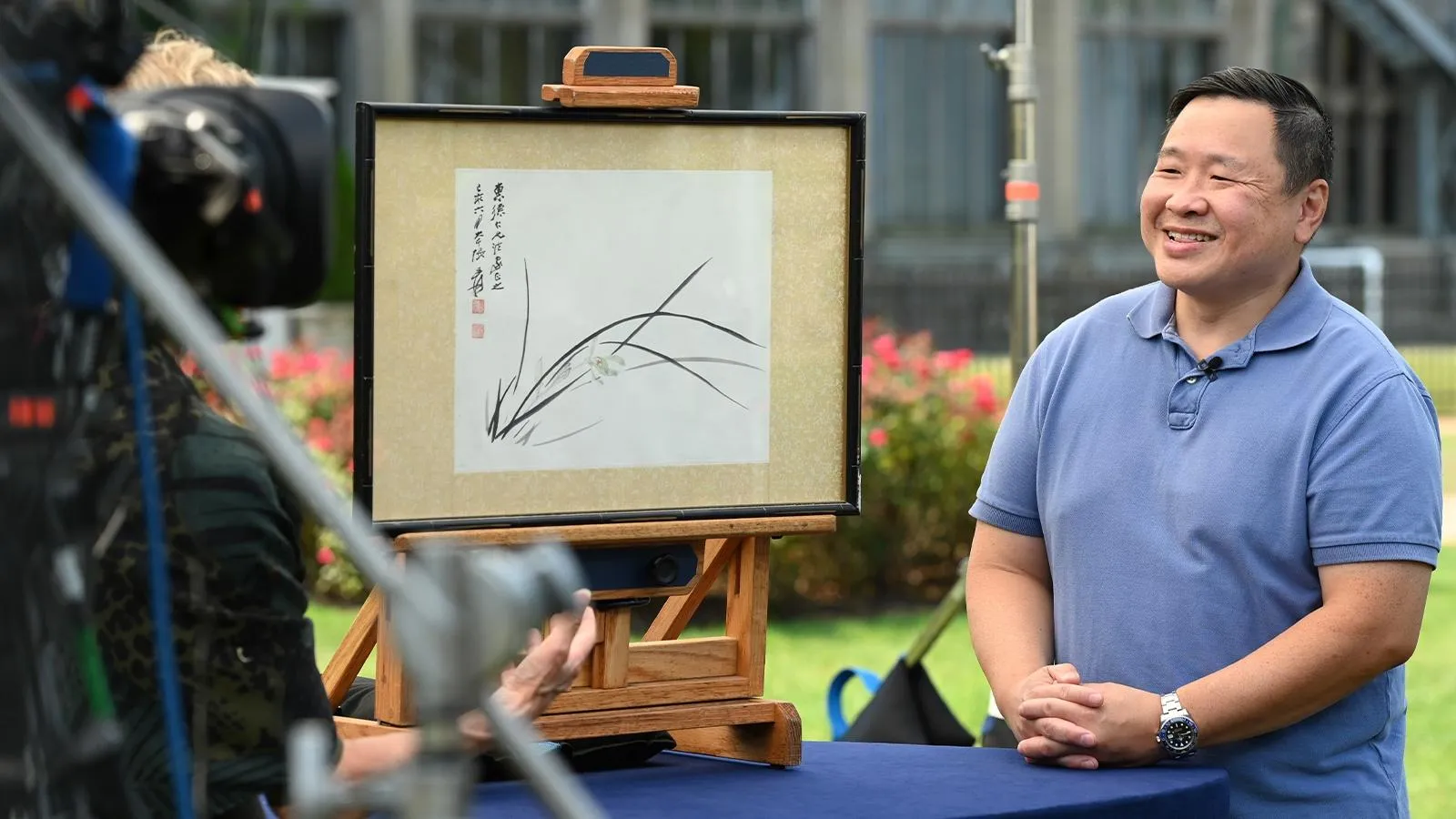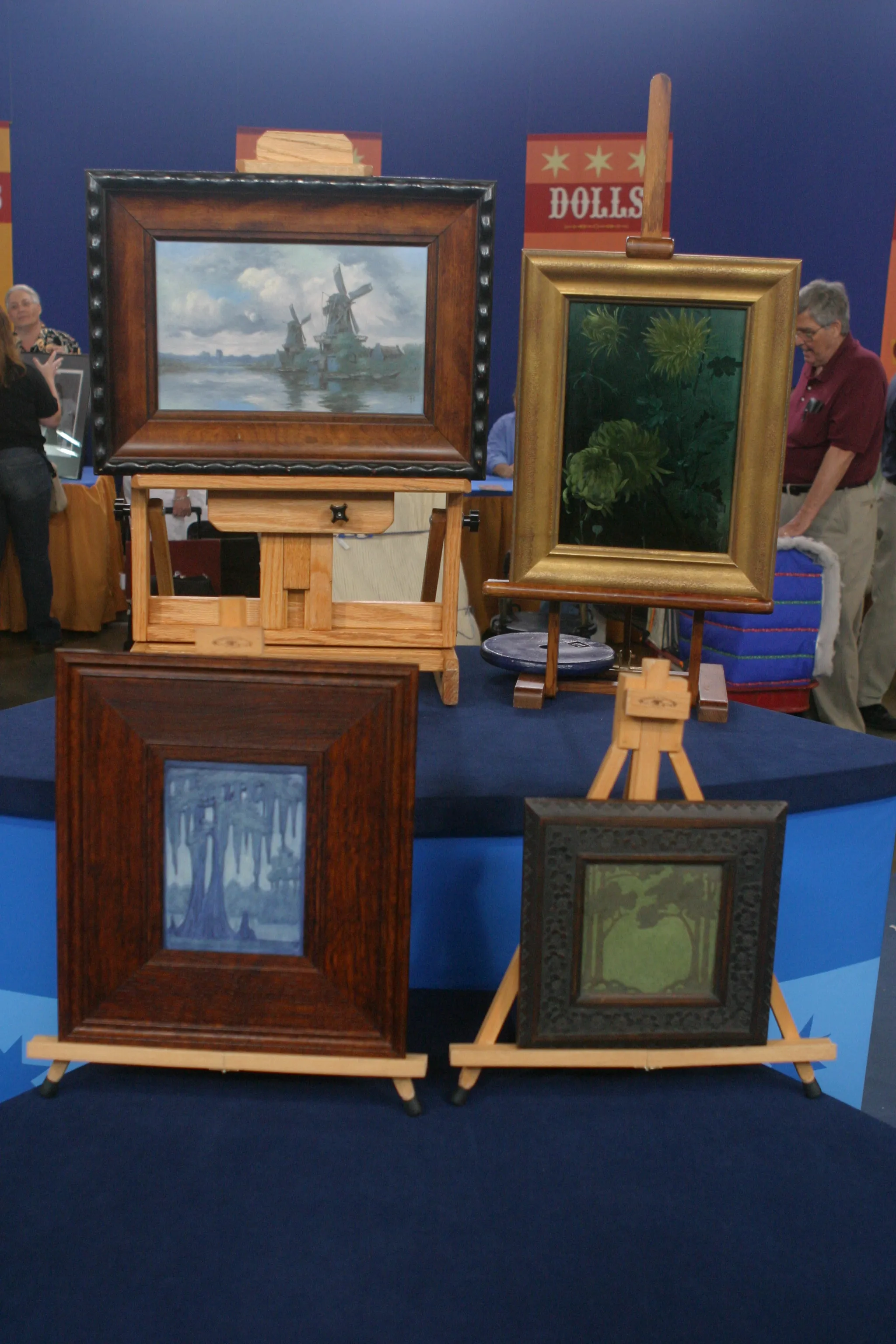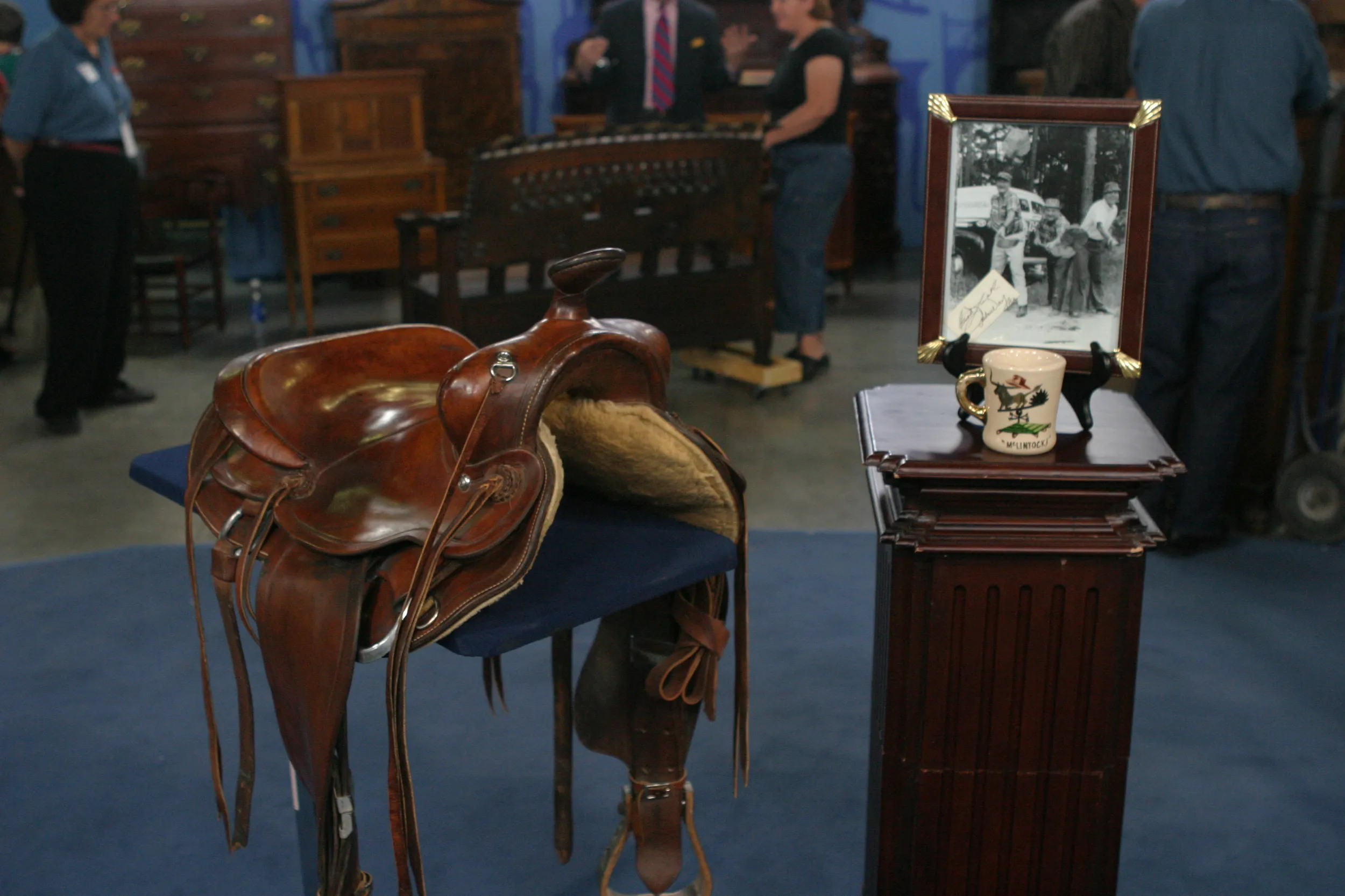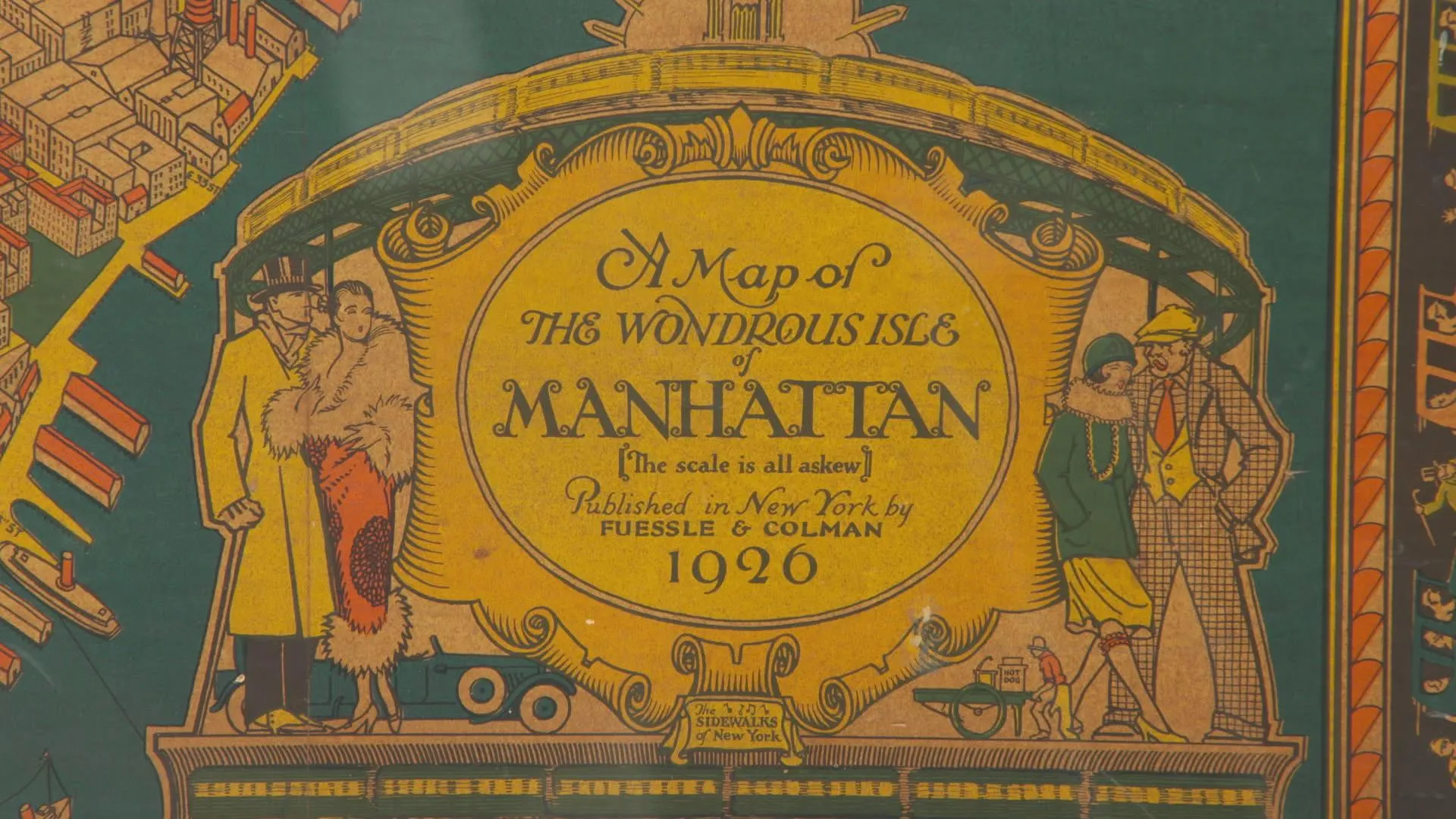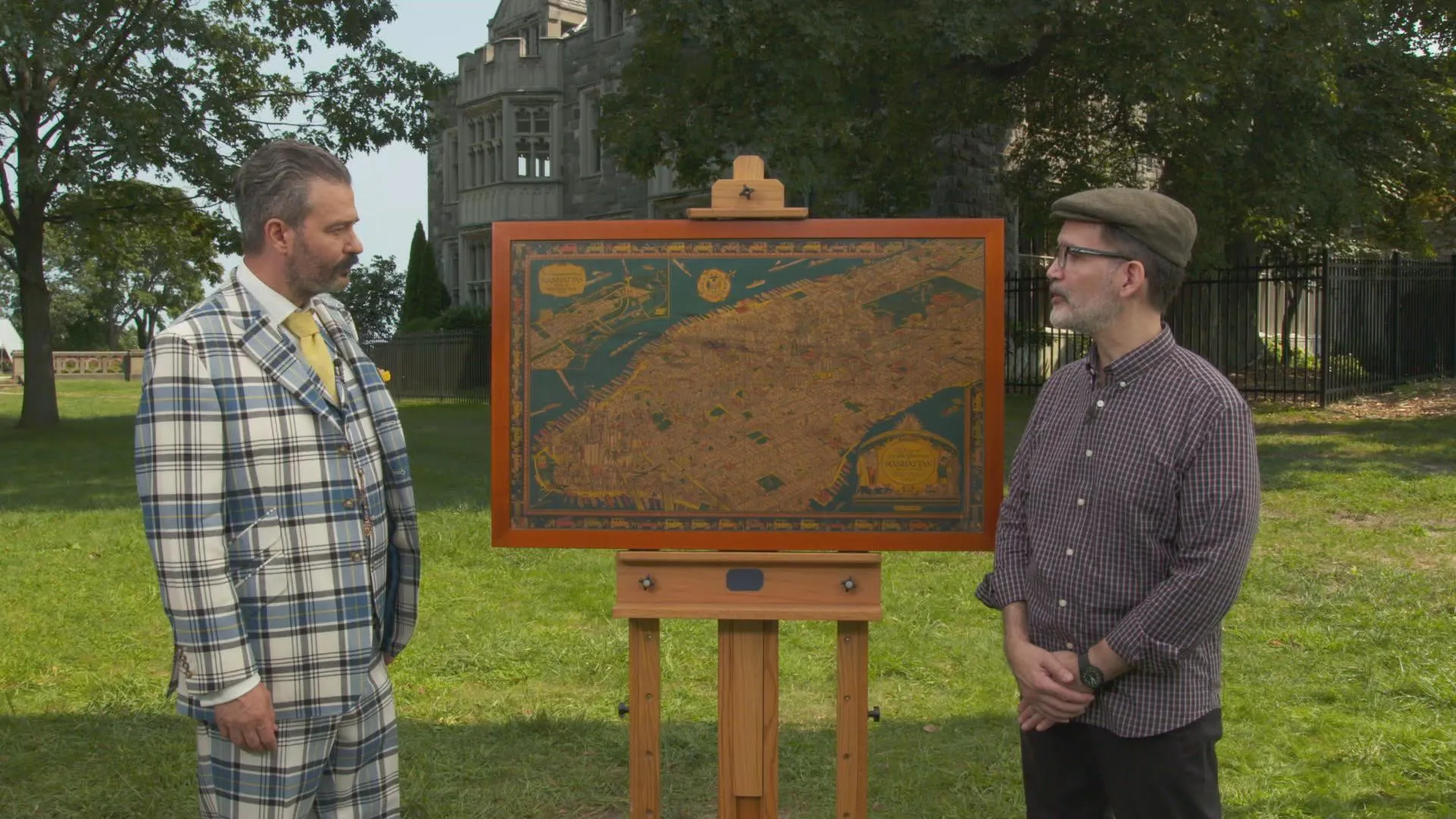GUEST: Um, this is a map that I bought probably back mid to late '90s at the 26th Street Armory, at an antique show. I paid about $200 for it, and I had it reframed and I've enjoyed it ever since.
APPRAISER: So the first thing I'd like to talk to you about is trying to determine what exactly this is. In fact, it's something that we in the trade refer to as a poster map. And these maps were made as tourist knickknacks. These maps were made as decoration. They weren't particularly advertising anything, right? A poster advertises something. A map tells you how to get from point A to point B. This is more of a decorative keepsake, a, a tourist tchotchke, if you will, something that might have been a memento of a trip to New York. So, as we see in the cartouche, the poster was printed in 1926 and the artist was C.V. Farrow. That's Charles Vernon Farrow.
GUEST: Mm-hmm.
APPRAISER: Not a particularly well-known or famous artist, but his work here is exquisite.
GUEST: Yeah.
APPRAISER: It's, it's a shame that there aren't more examples of his work. First of all, the border is extraordinary. The border is this sort of cacophonous traffic jam of multicolored cars and people, so wonderfully visually expressing the tumult of New York streets. It makes it very clear that the scale is all askew.
GUEST: Yes, and...
APPRAISER: They're, they're telling you, "This is not a map." Like, "Don't use this to get around the city. If you're a tourist, don't use this." But this gives such a great feeling for New York. These wonderfully dressed flappers and the gentlemen who are courting them...
GUEST: The gangster, I think. (laughs)
APPRAISER: You say he's a gangster because he's wearing a plaid suit. I'm not sure what you mean by that, but point well-taken. Uh, the, the, the imagery is great.
GUEST: Yes.
APPRAISER: For example, St. Gabriel's Park. I'm a native Manhattaner, born and raised on the island of Manhattan. I'd never heard of Gabriel's Park until I saw this. So you paid $200 for it.
GUEST: Yes.
APPRAISER: Any thoughts as to what it might be worth now?
GUEST: Well, I mean, there have been thoughts anywhere between $1,200 to $5,000, anywhere in between there-- I really don't know.
APPRAISER: The thing about poster maps is, very much like real estate, their value largely depends on location, location, location. And while there are poster maps from around the world, all across Europe and from different parts of America, the more important and the more desirable the location, the higher the value, which really puts this 1920s, flapper, Art Deco-era map of New York right in the middle of the desirability bull's-eye.
GUEST: Great.
APPRAISER: Certainly to my mind, this poster is worth far more to somebody who loves New York or who maybe lives in New York than it would be to somebody who lives in Michigan. I mean, this poster speaks to New York, it exudes New York, it's a, it's just this wonderful piece of New Yorkiana. I've been dying to say that all day.
GUEST: (chuckles)
APPRAISER: Um, so at auction, I would estimate this piece between $800 and $1,200. Again, most likely selling to a New Yorker. Now, to the thoughts that you had and that your friends had, in good condition, I would estimate it between $1,500 and $2,000.
GUEST: Oh.
APPRAISER: So, in fact, it being mounted to a board and the colors having faded almost cuts the value in half.
GUEST: Okay.
APPRAISER: But I will also say that it's a very rare piece. It's only come up to auction once that I'm aware of...
GUEST: Mm-hmm.
APPRAISER: ...in the last 20 years.
GUEST: Mm-hmm.
APPRAISER: And because of its impressive New Yorkiness, it is possible it could sell for more than that.
GUEST: Okay.
APPRAISER: I don't actually think it would ever get to the $4,000 or $5,000 range.
GUEST: Mm-hmm.
APPRAISER: But certainly it could sell between $2,000 and $3,000. Even in this condition, it's not out of the question.

